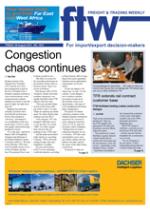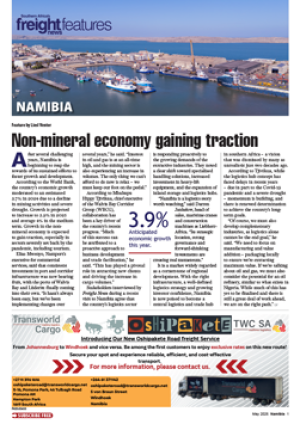The state of trucking on the
N3 – the country’s major
road transport route linking
the national industrial hub of
Gauteng with the port city of
Durban – is getting worse,
according to Con Roux,
commercial manager of N3
Toll Concessions (N3TC), that
manages the toll section of this
main highway.
“It’s a jungle out there,”
he added, quoting one of his
incident managers on the toll
route.
He was speaking at “Call
to Action”, a meeting held at
the annual KwaZulu Natal
truck show at Shongweni near
Durban of some 350 senior
executives from the country’s
trucking industry. At what
turned out to be a strange
combination of a vibrant
and shocking day, speakers
covered subjects which
exposed the serious lack of
road safety in the country, and
tried to come to some solution
to this frightening problem.
“It’s a battle-front out
there,” said Patrick O’Leary,
managing editor of FleetWatch
magazine, the sponsors,
organisers and presenters of
the event.
“It’s everybody’s problem,”
he added, “with 15 000 deaths
a year, or 43 a day, on the
South African roads.”
And heavy commercial
vehicles are big players in
this road carnage, according
to other speakers – who
highlighted the failings of
the industry with some quite
shocking observations, with
a particular stress on the
misbehaviour of what they
termed “the rats and mice” of
the industry.
A number of the major
problems were described.
Poor, infrequent (if at all)
maintenance of trucks and
trailers was one. Added to
that was what Dave Scott, an
independent trailer expert,
said was “buying pup parts for
dog trailers”, a money-saving
exercise by incompetent truck
or fleet owners.
“Brakes – what brakes?”
said Keir Guild, technical
director of Wabco. He pointed
out frequent instances of
mismatching brake boosters,
worn-out or loose brake pads,
and the horrifying instances
of brake tests showing zero
pressure of the brakes – in
other words, no brakes.
Just as bad with tyres,
said Terence Bowren, of
the training department
of Bridgestone, the tyre
distributors. He again
talked about serious cases
of mismatching, in sizes,
tread patterns and mixing of
radial and cross-ply tyres;
serious and unattended tread
and sidewall damage; nonalignment
of tyres; and wrong
tyre pressures, “It’s the air
which carries the load”, he
said.
“What’s the difference
between poor roads and good
roads?” asked Paul Nordengen,
amongst other titles, a member
of the SA Road Federation.
And a simple answer to
his question is cost. Simply
put, good roads cost truckers
R0.96/kilometre; fair roads
R1.24/km; and poor roads
R2.11/km. “You pay for good
roads, whether you have them
or not,” he added.
After lunch, Willis Mchunu,
KZN MEC for transport,
community safety and
liaison, paid a visit to the
Call to Action meeting. He
brought with him a horrifying
10-minute video of horrific
road accidents filmed by
roadside cameras. “Tragic,” he
said, “but the truth.
“The issue of road safety is
one of the most important in
this country. The vast majority
are a crime. Fools who drinkand-
drive, people driving at
lunatic speeds, and those who
just ignore all the road signs.”
He welcomed the meeting
saying that every industry
body which addressed the
issue was a step towards
promoting more road safety.
Con Roux then produced
some equally shocking
statistics from the toll stretch
of the N3. There are 4 600
trucks, most of them big units,
each day on the route. They
compose 32% of the vehicle
mix, but are involved in 43%
of the accidents – comprising
96 fatal crashes in 2010,
with 147 fatalities. Speeding
was noted for 88% of the
vehicles southbound, and 77%
northbound. Fatigue, much of
it caused by anything up to a
full day’s wait at the Durban
container terminal, is a major
issue; and 800 tyres a month
are shed on the toll route.
“It’s time for us to take
control,” Roux added.
State of trucking on the N3 getting worse
26 Aug 2011 - by Alan Peat
0 Comments
FTW - 26 Aug 11

26 Aug 2011
26 Aug 2011
26 Aug 2011
26 Aug 2011
26 Aug 2011
26 Aug 2011
